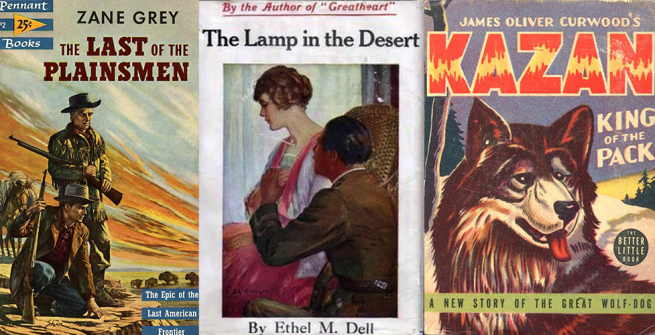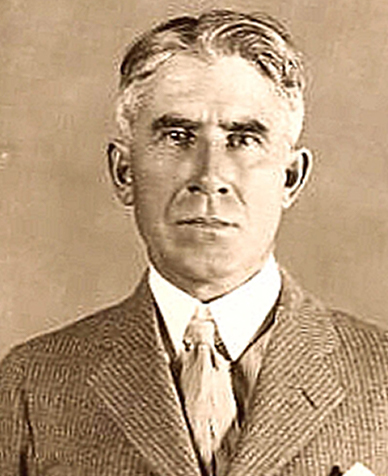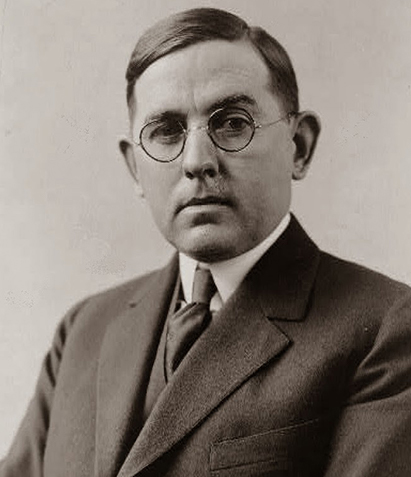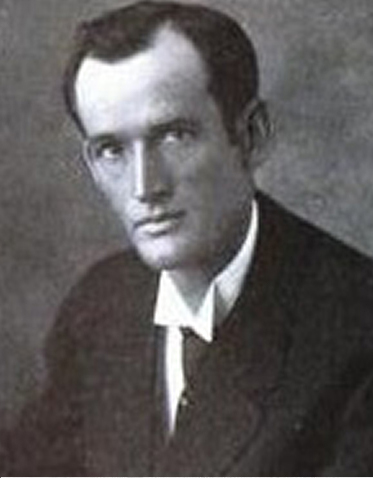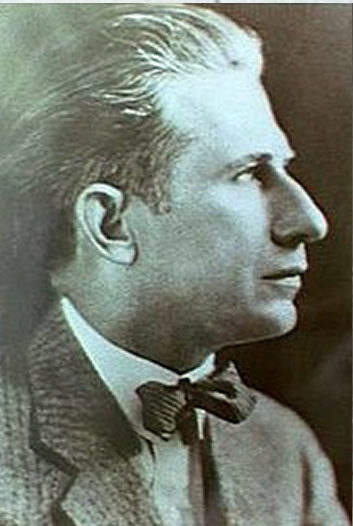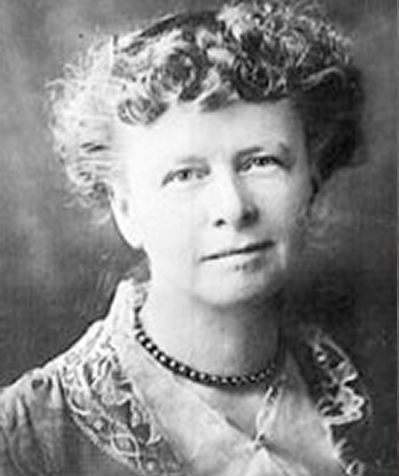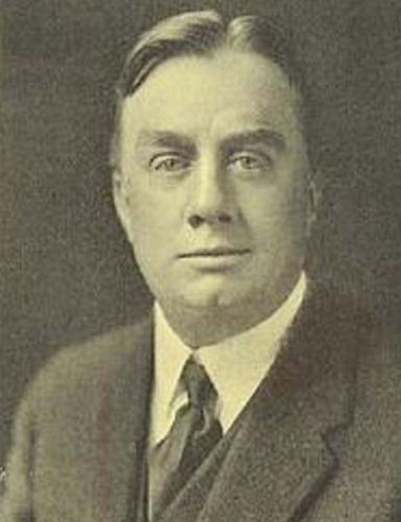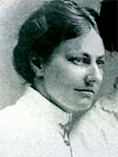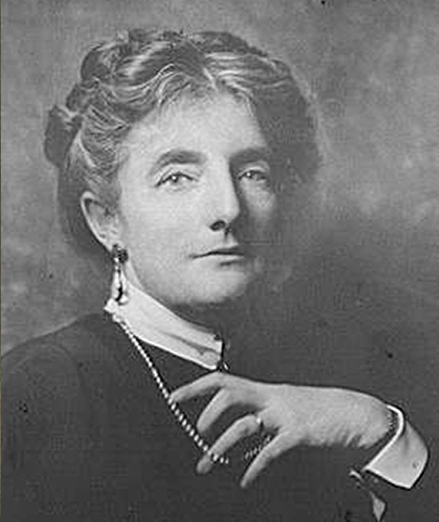Like the current year, 1920 was an eventful one for the United States. The “Spanish Influenza” epidemic of the previous two years, which we’ve heard a lot about recently, had taken 675,000 American lives, including more than half of the 116,000 who died while serving in World War I. President Woodrow Wilson had suffered a serious stroke in October 1919 and spent his last year in office as a bedridden invalid, with his wife and aides keeping the true seriousness of his condition secret from the general public. The 18th Amendment, establishing prohibition of liquor nationwide, took effect in January of 1920, and the following August the 19th Amendment was ratified, giving women in every state the right to vote just in time for the November presidential election won by Warren G. Harding.
Given all these recent upheavals, what sorts of novels were Americans reading in large quantities? A glance at Publishers Weekly’s list of fiction bestsellers for 1920 shows that all ten books qualify as escapist reading: adventures, romances, melodramas, nostalgic looks at the past. To get an idea of the types of stories that were resonating with readers at the dawn of the “roaring twenties”, let’s take a look at the authors and their books.
Ten Best-Selling Books From 1920
Zane Grey (1872-1939)
At the top of the list is an author who is still well-known today. Zane Grey is primarily associated with the western genre, though he did write fiction with other settings as well. Many of his readers might be surprised to learn that he grew up in Ohio, worked as a dentist in New York City, and spent his final years in Altadena, California. He did travel extensively in the American West, and those travels provided him with the background of many of his stories of the frontier—a way of life that was vanishing at the time he was writing about it. His 1920 bestseller,The Man of the Forest, is typical of his westerns, with their solitary heroes looking to right the world’s wrongs. Milt Dale, who lives alone in the forest lands of southern Arizona, overhears a gang plotting to kidnap a young woman and take over her land. There have been three film versions of this book—the last one with Randolph Scott in the lead.
Peter B. Kyne (1880-1957)
Peter B. Kyne is not as well remembered today as Zane Grey, but his books were immensely popular during his lifetime, and over 100 movies have been based on his stories. He was born and died in San Francisco, but he spent much of his youth on his father’s cattle ranch, and many of his novels take place in both urban and rural California. He wrote a number of westerns (The Three Godfathers is the best-known) but he also wrote business novels like The Go-Getter and melodramas like his 1920 book, Kindred of the Dust. This story is set in the lumber country of southwest Washington and tells of a young woman who discovers her husband is a bigamist. When she returns home to her father with her child, the whole town shuns her—except the son of a well-to-do family. Famed director Raoul Walsh made a silent film version of the book, starring his then-wife, Miriam Cooper.
Harold Bell Wright (1872-1944)
Harold Bell Wright is another early twentieth-century writer with a California connection. He grew up in extreme poverty in Ohio, became a Disciples of Christ minister for a number of years, but found that he could make a better living as a novelist. He eventually settled in the American Southwest—first near Tucson, later in Escondido. Many of his books have a strong Christian element, but he is often critical of “popular” churches that focus more on raising money than on the souls of their congregations. His story The Winning of Barbara Worth takes place in California’s Imperial Valley before the Salton Sea was created there, but much of his best-known work, such as The Shepherd of the Hills, is set in the Ozarks, where he spent a lot of time during his preaching career. His 1920 bestseller, The Re-Creation of Brian Kent, is an Ozarks novel in which an embezzler is rescued from his sinful ways by the influence of a family member and turns his life around.
James Oliver Curwood (1878-1927)
Another very popular adventure novelist of the era was James Oliver Curwood, who set most of his books in the wilds of Alaska and the Yukon. Though he spent his life in the small town of Owosso, Michigan, Curwood was an inveterate traveler, and his hunting adventures inspired many of his books. His early death was caused by an allergic reaction to a spider bite while he was fishing in Florida. His most popular novel in terms of sales was 1920’s The River’s End, in which a Mountie pursues an accused murderer who looks just like him. Eventually the supposed killer comes to the Mountie’s rescue and convinces him of his innocence, and when the Mountie dies soon after, he asks his doppelganger to take his place to catch the real killer. There were three film versions in which Lewis Stone, Charles Bickford, and Dennis Morgan played the dual leading roles.
Irving Bacheller (1859-1950)
Perhaps the least famous of these once-popular authors today is Irving Bacheller. He was a native of upstate New York who became a successful newspaper reporter and editor and is credited with founding the first modern newspaper syndicate before turning to fiction in his 40s. Most of his books are historical romances set in his native New York “north country”, but his bestselling A Man for the Ages relates the story of a family from the Adirondacks who relocate to the Illinois frontier in the early 1830s and meet an ambitious young man named Abraham Lincoln.
Eleanor H. Porter (1868-1920)
Eleanor H. Porter is primarily remembered for her enormously popular girls’ story Pollyanna, which has continued to attract readers for over a century. But many of her other novels—some for young people, others for adults—were widely popular in their day. A lifelong New Englander, she was born in New Hampshire and lived mostly in the Boston/Cambridge area after her marriage. One of her last books, Mary Marie, has a thirteen-year-old heroine whose parents have been divorced; she travels back and forth between the two households every six months. The title reflects the fact that her parents couldn’t even agree on her name; her father calls her Mary, while her mother insists on Marie. Interestingly, in the book’s final chapter, set twelve years later, Mary Marie contemplates her own pending divorce.
Joseph C. Lincoln (1870-1944)
During his 40 years as a writer of popular fiction, Joseph C. Lincoln set almost all of his nostalgic, humorous tales on Cape Cod, Massachusetts, where he grew up. They usually feature gruff sea captains and sailors, not the “summer cottage” people we associate with the Cape Cod of today. His book Cap’n Eri was adapted as a film with David Carradine, Rip Torn, and Bruce Dern as recently as 2008. His 1920 novel The Portygee follows the usual pattern of his fiction: a young man comes to live with his Yankee grandfather in a Cape Cod village and the two lock horns over various issues, including the old man’s insistence on referring to his grandson as a “Portygee”, in spite of the fact that his heritage on his father’s side is actually Spanish, not Portuguese.
E. Phillips Oppenheim (1866-1946)
E. Phillips Oppenheim is one of only two British authors who made it onto this 1920 American bestsellers list. Oppenheim called himself “The Prince of Storytellers”, and during his long career spanning the period from the late Victorian era to World War II he produced over 100 novels, many of them in the mystery/thriller/intrigue genre. His 1920 The Great Impersonation is probably his most famous book, and has been reprinted many times. Like the Curwood book described above, it centers on two adversaries who look exactly alike; in this case, one is English and the other is German. After they meet in the wilds of East Africa, the German hatches a plot to kill his lookalike and take on his identity to spy on the British during World War I. In the last of three successful film versions, with Ralph Bellamy in the two leading roles, the story was updated to World War II.
Ethel M. Dell (1881-1939)
Another British author who was very popular in America as well as her homeland was Ethel M. Dell. Little is known about her private life, other than the fact that she married for the first and only time at age 40, and that her husband, an army officer, resigned his commission after their marriage and devoted himself to her, while she supported them with her writing. Her books were considered quite racy in their day, but they were not well-regarded by some of her literary contemporaries, who complained about their syrupy romances and stilted dialogue. George Orwell makes some nasty comments about her in his Keep the Aspidistra Flying, and P. G. Wodehouse makes it clear in his Uncle Dynamite that he thought her writing was unintentionally hilarious. The Lamp in the Desert from 1920 has a typically over-the-top plot, with a setting among the British colony in India. The heroine marries the villain even though she realizes right before the wedding that she loves the hero. The hero discovers that the villain already has a wife back in England and blackmails him to disappear, after which he marries the heroine himself and they are blissfully happy. A few months later, with a baby on the way, the hero discovers that the villain’s wife actually died a few days before his marriage to the heroine, so the hero, not the villain, is a bigamist! Adding to the fun, the hero has a penchant for disguises, including dressing as a woman at one point.
Kathleen Norris (1880-1966)
Last but certainly not least of these ten authors is Kathleen Norris, who was the Danielle Steel of her day. Like Steel, she was prolific, 93 novels, and many of her books took place in California; she lived in San Francisco much of her life, or in the vicinity of New York City. Norris married into a prominent literary family: her husband, Charles, was a novelist as well, who won praise from F. Scott Fitzgerald, and his older brother, Frank, wrote the classics McTeagueand The Octopus. But Kathleen clearly decided to leave the serious fiction to the men and focus on stories for a primarily female audience. Harriet and the Piper, her 1920 book, takes place in New York and New Jersey. The “piper” of the title refers to the expression “pay the piper”. Harriet is a young woman who has worked for several years as governess and social secretary to a wealthy family. She has hopes of using her connections with the Carters to better her own financial situation, but her plans are interrupted by the reappearance of a charming con artist who knows a secret from her past—and also has designs on the Carter daughter, who has just turned eighteen.
Clearly, readers of 1920 were drawn to exciting tales of adventure and suspense, nostalgic looks at the past, and love stories of both the racy and moralistic variety. These categories are really not so different from the genres that appeal to today’s readers, even though the plot details and language may have changed with the times. In 1921, Zane Grey and James Oliver Curwood would be back in the top ten, but they were joined by a few books with more serious aims—notably Main Street by Sinclair Lewis and The Age of Innocence by Edith Wharton. Perhaps Americans were ready again to take a harder look at their country and its problems after an understandable need for diversion following a harrowing war and a global pandemic. By the way, all these books are still part of the Los Angeles Public Library collection. Since they are in public domain, you can also read them free online in sources like Google Books or Project Gutenberg, while our paper copies are inaccessible.
